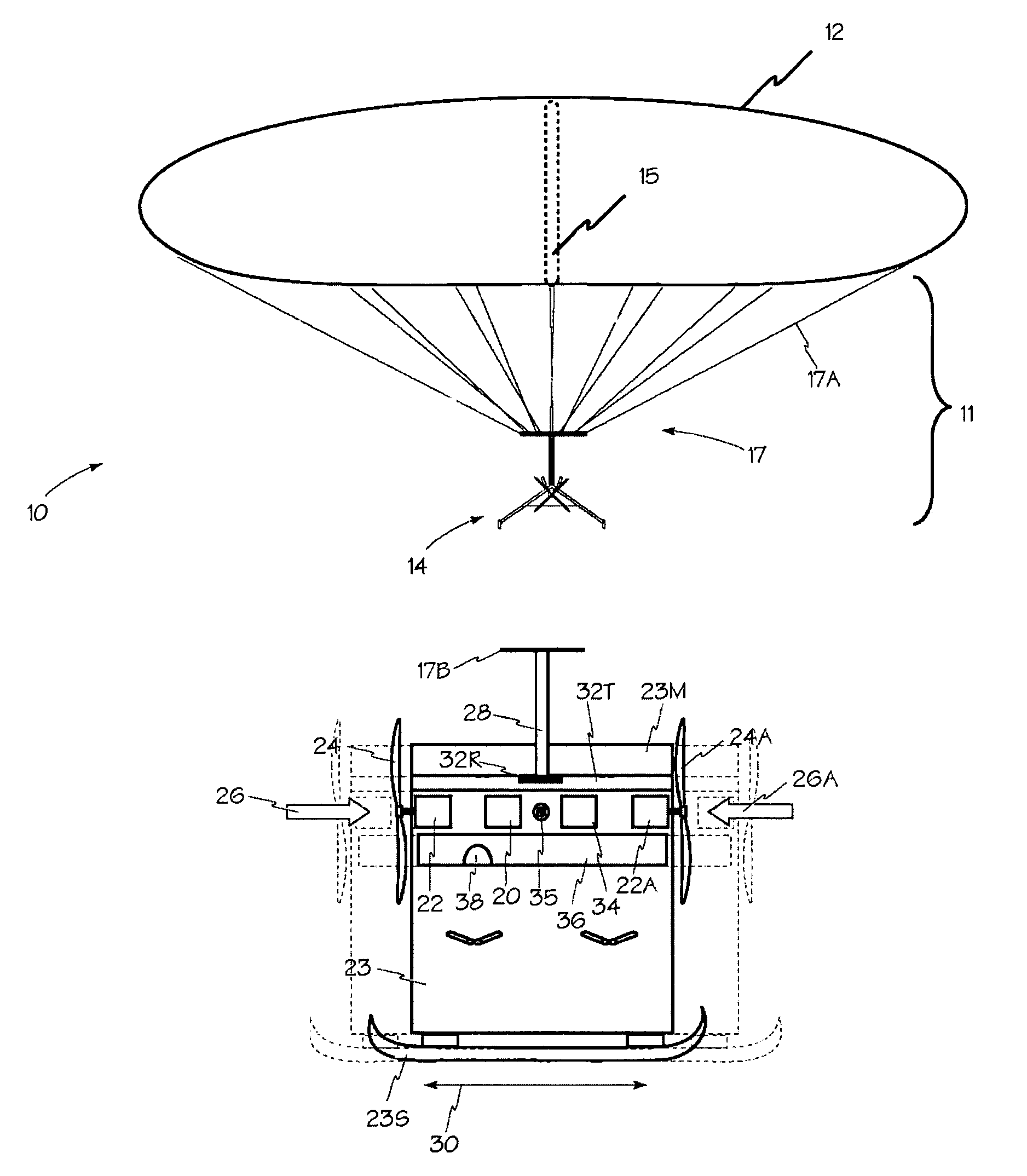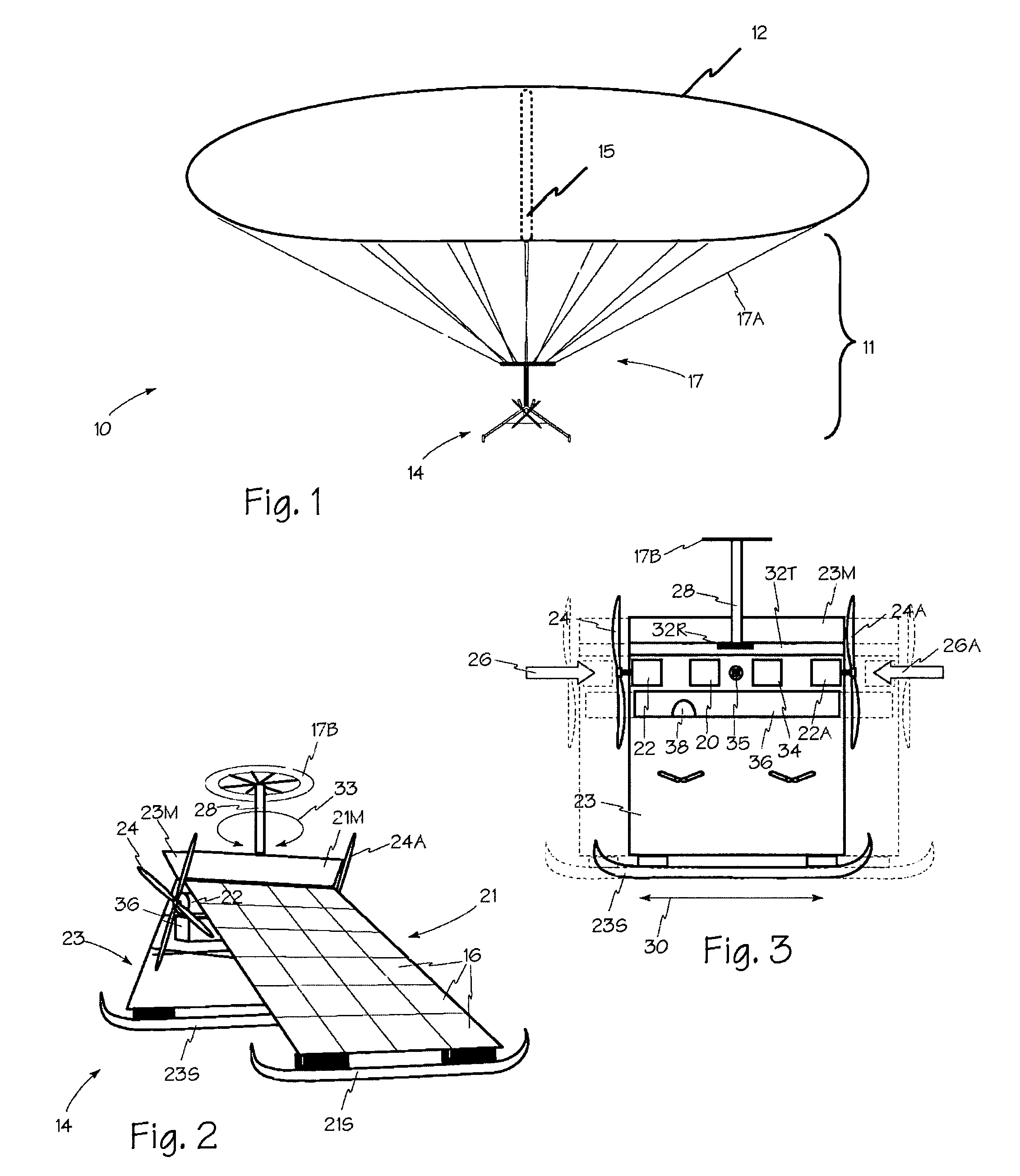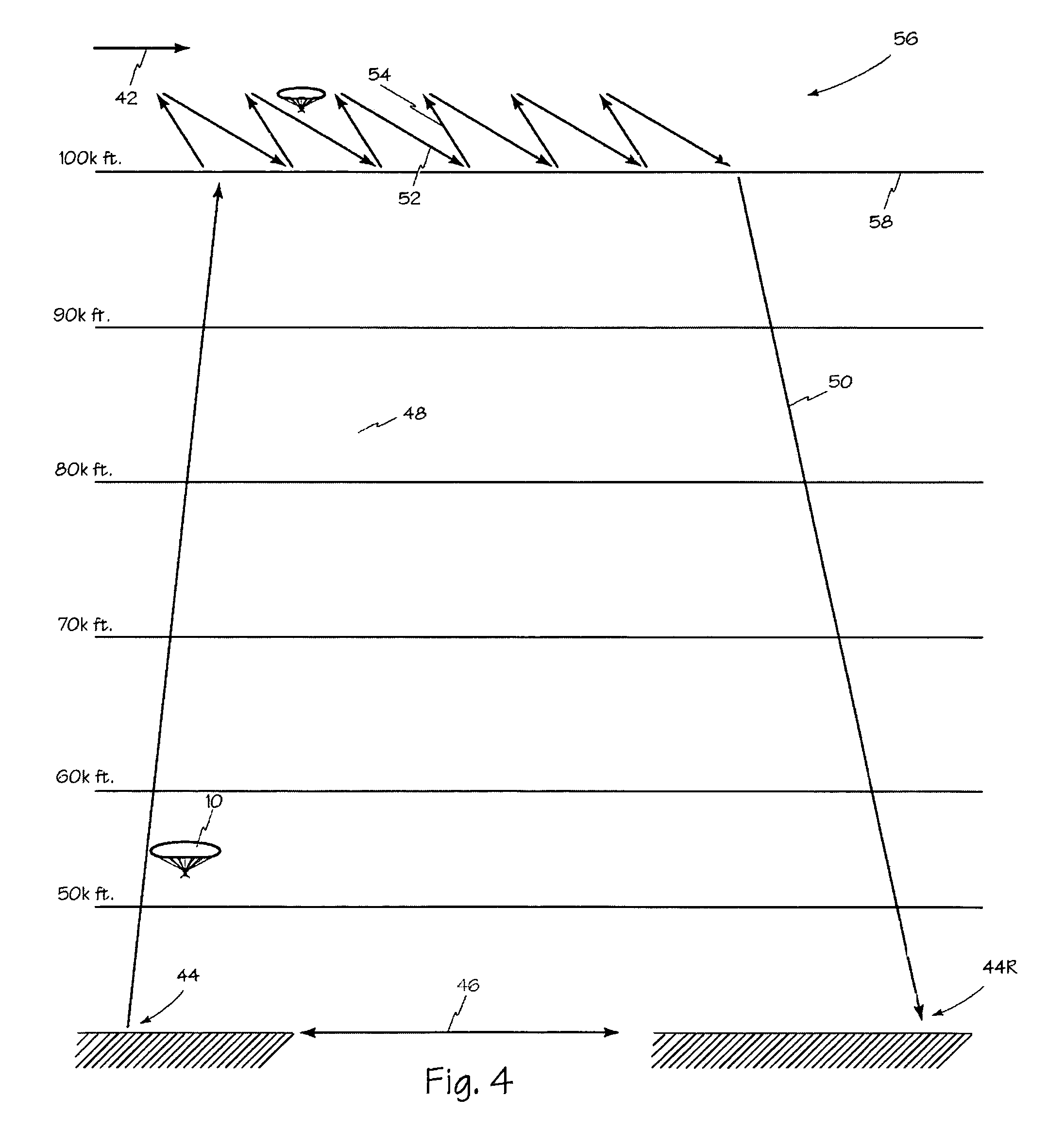Hybrid unmanned vehicle for high altitude operations
a technology of unmanned aircraft and high-altitude operations, which is applied in the direction of vehicles, power installations, aircraft, etc., can solve the problems of limited active buoyancy control, no maneuvering means of free floating balloons, and inability of conventional geo-synchronous satellites to provide high resolution imagery and high-fidelity sensing
- Summary
- Abstract
- Description
- Claims
- Application Information
AI Technical Summary
Benefits of technology
Problems solved by technology
Method used
Image
Examples
Embodiment Construction
)
[0021]Referring now to FIG. 1, a hybrid aerial vehicle 10 according to the present disclosure includes primary envelope 12 supporting lower stage 11. Primary envelope 12 may adopt any suitable shape, such as ellipsoidal, to provide aerodynamic lift, an optimal ratio of lift to drag, coupled with low-density lift from the contents of primary envelope 12. The contents of primary envelope 12 may be any suitable lighter-than-air gas. Primary envelope 12 may be formed of translucent material to allow solar energy collection when primary envelope 12 is between the sun and gondola 14. Primary envelope 12 may also include one or more internal baffles or partitions 15 to provide sufficient rigidity to maintain the desired shape of the primary envelope while supporting lower stage 11 in flight.
[0022]Referring now to FIG. 2 and FIG. 3, lower stage 11 may include suspension equipment 17 and gondola 14. Gondola 14 supports all vehicle subsystems and payloads. Suspension equipment 17 may include...
PUM
 Login to View More
Login to View More Abstract
Description
Claims
Application Information
 Login to View More
Login to View More - R&D
- Intellectual Property
- Life Sciences
- Materials
- Tech Scout
- Unparalleled Data Quality
- Higher Quality Content
- 60% Fewer Hallucinations
Browse by: Latest US Patents, China's latest patents, Technical Efficacy Thesaurus, Application Domain, Technology Topic, Popular Technical Reports.
© 2025 PatSnap. All rights reserved.Legal|Privacy policy|Modern Slavery Act Transparency Statement|Sitemap|About US| Contact US: help@patsnap.com



